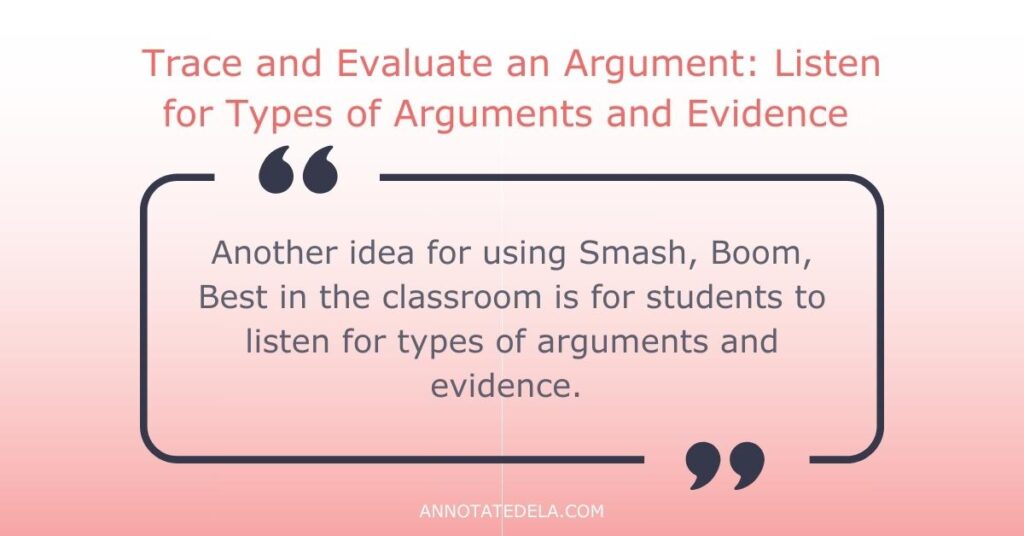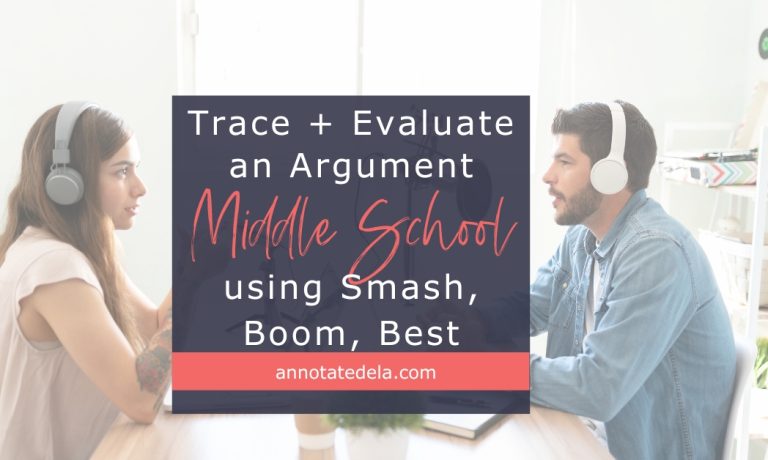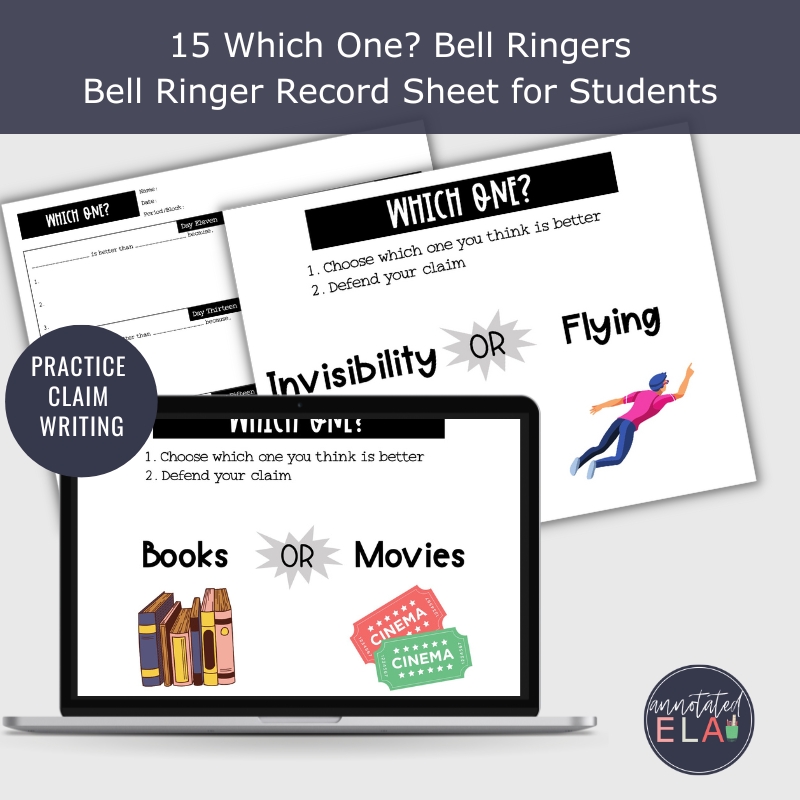Do your students struggle to trace and evaluate an argument? You and your students will love this fun and engaging solution. Students will become proficient at tracing and evaluating arguments and identifying and analyzing claims, reasons, and evidence using the podcast Smash, Boom, Best.
Smash, Boom, Best is a funny, smart debate show for kids. Every episode takes two cool things, smashes them together and lets you decide which is best: Pikachu vs. Mario, Lollipops vs. Popcorn, Flamingos vs. Axolotls, Mermaids vs. Bigfoot, Cats vs. Dogs, Spiderman vs. Batman, Refrigerators vs. Toilets, Minecraft vs. Lego… the list goes on.
Not to mention, you don’t have to worry about mature content or language with this podcast, and your students will love the silly topics.
Want to give Smash, Boom, Best a try? Grab Trace an Argument Middle School and pair the listening sheets with the podcast. Students will be engaged the entire time.
Let’s explore how to use this podcast in the classroom.
Trace and Evaluate an Argument: Write Their Own Argument

In addition to having students listen to the podcast and filling in listening sheets that help them to trace and evaluate an argument, students write their own arguments.
Before listening to an episode, you can provide students with the topic and have them outline or write their own argument.
Extend the activity and have students debate a partner who has an opposing view or have the class participate in Philosophical Chairs.
Once students have made their argument, listen to the episode and have them listen for similar arguments. Students can use a listening sheet to trace and evaluate the argument.
Another quick way to use the podcast is to have it be bell work or a warm-up. Provide students with the topic (you could have a week’s worth of topics), choose a claim, and write three reasons. Don’t listen to any episodes yet, have them work through different topics from the show.
Eventually, have the students choose which episode they want to listen to as a class, or have them listen on their own and use listening sheets.
Having students craft their own argument will provide another purpose for listening, will the side they argued win on the show? Do the debaters use similar arguments?
It adds a personal element.
Trace and Evaluate an Argument: Debate the Winner

Another way to use the podcast is to break the episodes apart.
The quick version:
First, the episodes are debated in rounds.
Students can listen to a single round and choose a winner. Students would then defend their choice with evidence from the episode.
Extend the quick version: Two Possibilities
One possibility is to have students debate the winner. After students have listened to the first round, they could debate each other on who they think won the episode.
Students would use the evidence to draft an argument and debate in pairs or groups.
A second possibility is to have students listen to the second round after choosing a winner.
Students would add evidence or maybe even change their minds on the winner.
The episode would be played to the end to see who won the episode.
Both possibilities allow students to argue who they think the winner is in pairs or groups.
In both versions points could be awarded to the best arguments and evidence.
Teacher’s choice, you could then play the rest of the episode to see who the winner is on according to the guest judge.
Trace and Evaluate an Argument: Listen for Types of Arguments and Evidence

Ethos, Pathos, and Logos
Another idea for using Smash, Boom, Best in the classroom is for students to listen for types of arguments and evidence.
If you are teaching rhetoric, students could listen for types of argument used in the episode.
Are the guests using credibility? Logic? An emotional appeal? A mix of rhetoric?
Students can evaluate what is most effective and why for the argument being made.
Types of Evidence
Students listen for types of evidence.
Are the guests telling stories to support their claim and reasoning? Maybe the guests are using statistics and facts, testimonials from experts, or are they comparing the current argument to a known situation?
Students then evaluate which type of evidence is effective and why the evidence is effective.
The possibilities are only limited by your imagination. The podcast Smash, Boom, Best provides many opportunities for students to practice tracing and evaluating an argument.
Three Ways to Use Smash, Boom, Best in the Classroom

- Students write their own arguments using topics from the podcast
- Students determine the winner of the episode and debate or argue in pairs or groups.
- Listen for Types of Arguments and Evidence and Evaluate It
Your imagination is the only limit. Smash, Boom, Best provides many opportunities for students to trace and evaluate an argument.
If you want more support for how to use Smash, Boom, Best in the classroom, grab my Trace an Argument Middle School resource.
Grab the FREE Which One? Bell Ringers to use with Trace an Argument Middle School.







One Response